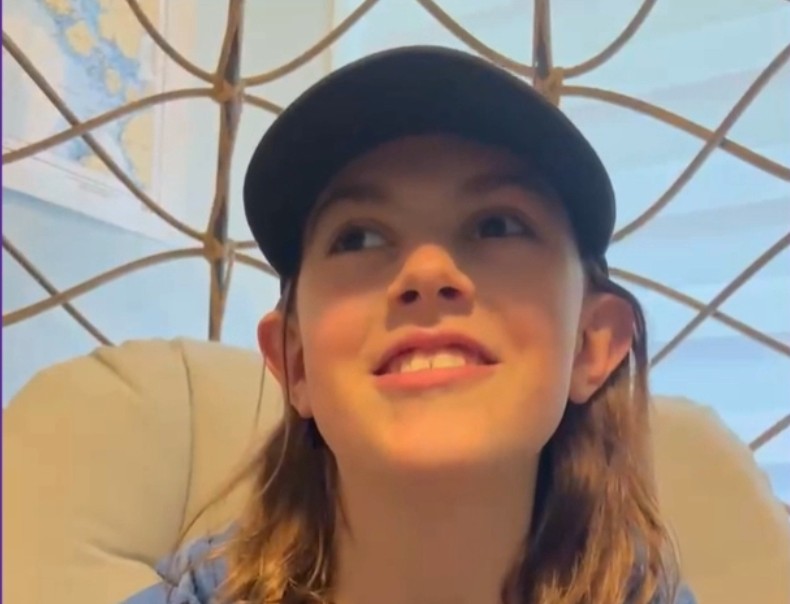

At just 12 years old, T.R. faced a reality that many children with dyslexia know all too well: “I’m 12 and I don’t even know how to write.” His teachers would send him to the hallway to “think about it,” leaving him feeling isolated and frustrated. But T.R.’s story is a powerful testament to how the right approach can transform a child’s entire relationship with learning.
Before discovering Davis dyslexia programs, T.R.’s educational experience was marked by confusion and discouragement. His writing looked like “a bunch of blob letters,” his G’s appeared backwards, and traditional paper-and-pencil learning methods weren’t helping him advance at all. Like many children with dyslexia, T.R. possessed incredible creativity and intelligence, but the conventional classroom approach couldn’t unlock his potential.
“They would just like sort of put me out in the hallway and say, ‘you’ll think about it, T.R.,'” he recalls. This isolation is unfortunately common for children struggling with learning differences, often leading to decreased confidence and motivation. But T.R.’s natural artistic abilities, his love for Lego, clay, and drawing, would soon become the key to his transformation.
What makes dyslexia help through the Davis approach so effective is its recognition that children like T.R. aren’t broken, they’re wired differently. The program tapped into T.R.’s existing strengths, particularly his visual and tactile learning preferences. “I really like doing the program because it let me really interact with the skills that I already had,” T.R. explains.
The Davis Mastery for Dyslexia program uses clay modeling to help students understand sight words in a three-dimensional, experiential way. For T.R., this method was “up my alley already” because it combined his love of building and creating with essential literacy skills. Instead of staring at flat letters on paper, he could sculpt, touch, and manipulate words until they made sense.
One of T.R.’s favorite clay models was the word “else,” which allowed him to “combine two worlds together” by creating an alien talking to itself about people from “another place.” This creative interpretation demonstrates how the Davis approach encourages students to use their imagination as a learning tool rather than suppressing it.
T.R.’s description of his “dials”, his mental focus tools, shows his sophisticated understanding of attention control. He compares them to “Tesla thingamabobbers… like that blue glowing futuristic thing,” illustrating how he can now visualize and control his focus in ways that make sense to his creative mind.
T.R is now is now a confident learner, “I barely make any mistakes now,” he proudly shares. His handwriting evolved from illegible “blob letters” to “clean letters” that aren’t scattered everywhere. His backwards G’s are a thing of the past, and he’s developed remarkable speed and accuracy in his work.
Perhaps most importantly, T.R. has learned to overcome creative blocks, what he calls “word blocks”, by developing strategies like asking family members for ideas and combining concepts to spark his own creativity. This problem-solving approach extends far beyond just writing, giving him tools he can use throughout his life.
T.R. offers valuable advice for other children facing similar challenges: “If you have patience, you can do anything.” He’s discovered that consistent daily practice with clay words builds both speed and confidence, with some easier words taking him just two minutes to complete.
His self-motivation strategies are equally impressive. Rather than relying solely on external rewards, T.R. treats himself for completed work, whether that’s drawing time or other activities he enjoys. This internal motivation is crucial for long-term success and confidence building.
T.R.’s journey from educational isolation to confident learning offers hope for families seeking effective dyslexia help. His advice to parents considering the program is clear: “If you’re doing this at a younger age, this is really useful. So you won’t really end up like suffering.”
The Davis dyslexia programs teach more than reading and writing, they teach you how to leverage natural strengths and creativity. For visual, hands-on learners like T.R., this approach can mean the difference between educational struggle and genuine academic confidence.
As T.R.’s story shows, with the right support and methods, children with dyslexia can transform their perceived weaknesses into genuine superpowers. The key is finding an approach that honors how they naturally learn and think.
Don’t let your child struggle in silence like T.R. did. With the right support, they too can go from “blob letters” to confident writing, from educational isolation to academic success. Contact us today to begin your child’s transformation journey.